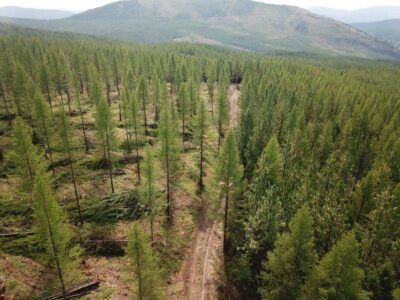What Trump Gives Appalachia With One Hand, He Takes Away with the Other
Ryan Zinke’s public land policies are accelerating the decline of eastern coal.
There is no one who Trump loves more than coal miners, and he has surrounded himself with Appalachian coal miners on important occasions. One of his most fervent pledges was to “end the war on coal.” Yet, Trump’s public lands policies are helping to accelerate the decline of eastern coal.
A recent study by researchers at Resources for the Future unpacks he problems besetting eastern coal jobs. They modeled the profitability of eastern coal mines:
“This analysis utilizes unique data on coal mine and power plant operation to estimate the impact of supply and demand factors on mine closure. We model closure as a function of expected pro ts, which allows us to compare the effects on mine closure of specific demand and supply shocks to expected mine pro ts. Our results suggest that each shock substantially affected coal mine employment. Increasing costs of producing Appalachian coal have had the largest impact on closures with lower natural gas prices and lower electricity demand each accounting for a substantial number of closures additionally.”
These results are consistent with earlier research. An issue brief by Alan Krupnick at RFF explained the economics of competition within the coal industry:
“Western coal is far cheaper because it is strip-mined (rather than deep-mined), driving the underlying labor productivity differences (29.3 short tons per worker-hour in Wyoming’s Powder River Basin versus 1.6 short-tons per tons per worker-hour in southern Appalachia.). And western coal is more desirable to utilities because it has a much lower sulfur content (if somewhat lower energy content) than eastern coal, so helps meet standards for sulfur dioxide emissions under the Clean Air Act”
According to Krupnick, the cost disadvantage of Eastern coal is so great that even doubling the federal royalty on Western coal would hardly help. That would lead to only a 15% increase in coal production in Northern Appalachia and a 7% increase in Central Appalachia. But Trump has been moving in the other direction. Ryan Zinke has been working hard to open up more federal lands to coal mining. That’s a dagger in the heart of eastern coal.
Decreased demand is the other factor cited in the recent study. As pretty much everyone knows by now, low natural gas caused steep declines in natural gas prices, leading to a wave of closures for coal-fired electricity plants. Again, Ryan Zinke has been been zealous in his efforts to expand production of natural gas on public lands. Every new fracking operation is one more threat to the future of coal.
The trouble with “all of the above” as a strategy is that energy demand isn’t limitless. Expanding some sources puts competitive pressure on others. Eastern coal is now the marginal fuel, at greatest risk from these increased pressures.








Reader Comments